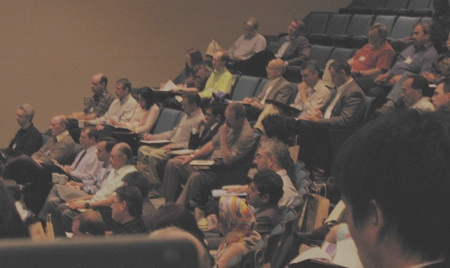Bio-Energy Conference Underway
By 250 News

Delegates settle in at the Canfor Theater for the Bio energy conference
The first conference attracted 85 delegates, this time there are more than 200 delegates from all over the world. The growth in attendance echoes the growth in interest in development of bio-energy.
“We view bio-energy as major opportunity for this region and for this University” said UNBC President Charles Jago.
Certainly bio-energy is growing with word of at least three pellet plants being developed in the Northern Interior.
The Federal Government has already made a commitment to have 5% bio-diesel fuels by 2010. Provincial Minister of Agriculture, Pat Bell says we can expect the Federal Government to set aside half a billion dollars to the development of bio-energy fuels, and certainly the Peace District is humming over the prospects. “Not because of oil and gas extraction “ says Bell, rather, there is excitement about the potential for bio-diesel fuels because they require grain “It will produce a major opportunity for farmers in the Peace.”
There are other “clean” energy projects underway throughout the Province including the the forestry sector already under contract to B.C Hydro for excess power, there is also a bio-mass gasification plant north of Kamloops, a biodiesel production project in Fernie, a cellulose – ethanol project underway at UBC and there are projects to turn landfill gasses into energy.
The City of Prince George is already planning a community heating system. Mayor Colin Kinsley would like to see that project tied to electricity production. “It is my understanding that if you just use bio-mass to heat water you are getting about 25% efficiency from the materials you are burning, but when you add electricity production, that efficiency rate jumps to 85%.”
“We have to get the message out to the nay sayers who don’t want us to cut trees, trees are our only true renewable resource.”
Previous Story - Next Story
Return to Home








